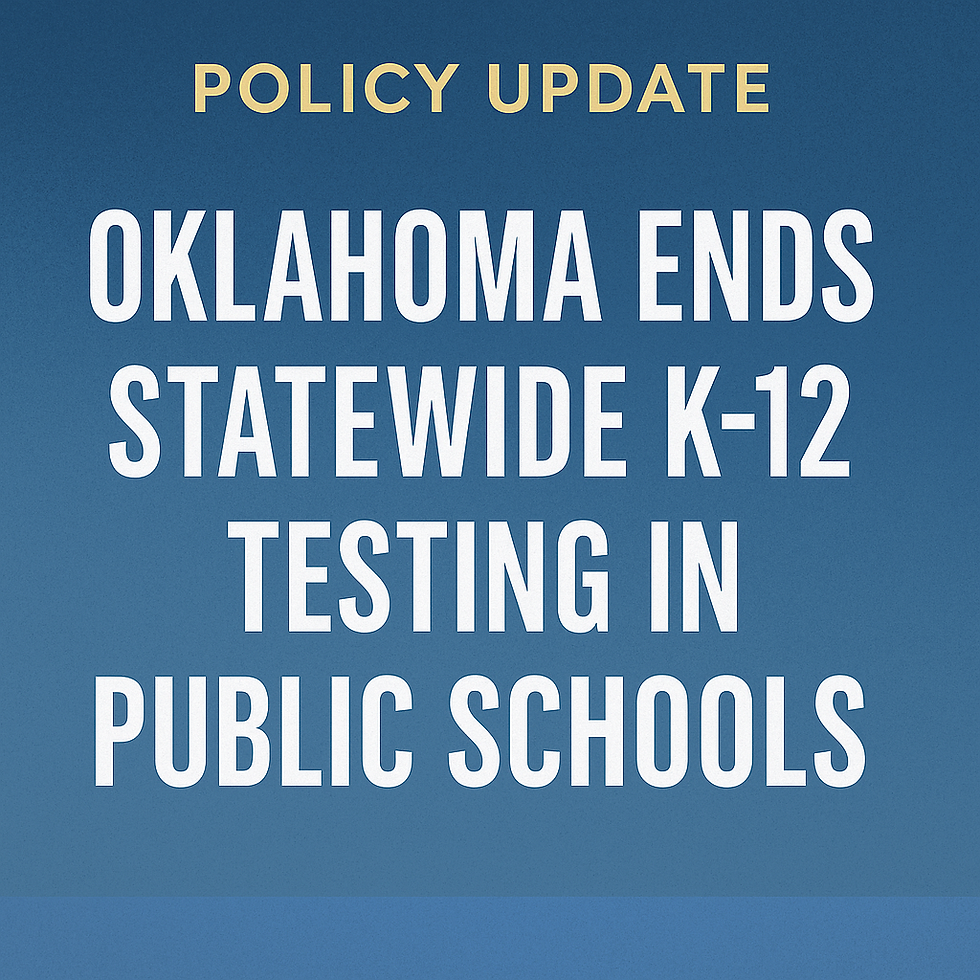Oklahoma Shifts Away from Traditional State Testing: What It Means for Students and Educators
- Al Felder

- Aug 9
- 2 min read
A Significant Move: Replacing Year-End Tests with Frequent Benchmarks
On August 8, 2025, Oklahoma’s State Superintendent Ryan Walters announced a bold transformation in student assessments. Starting in the 2025–2026 school year, the state will eliminate traditional statewide summative tests for grades 3–8 in Math and English Language Arts (ELA). Instead, districts may choose state-approved benchmark assessments given every six to nine weeks to monitor student progress more dynamically.

Superintendent Walters shared that this change stems from overwhelming parental feedback—81% of the nearly 23,000 surveyed agreed that state testing isn’t necessary. He emphasized empowering districts, reducing stress for students and teachers, and placing control back into local hands away from bureaucratic constraints.
Early Reactions: Practical Support Meets Legal Hurdles
While the move was welcomed by many for its focus on continuous student support, questions remain. Some education leaders worry about legal challenges, citing existing state and federal laws that mandate specific testing protocols. The State Board of Education may also need to approve the shift.
Advocates, such as the Oklahoma Education Association, support alternatives to high-stakes testing. They encourage methods like pre- and post-assessments, student projects, and creative demonstrations of learning—approaches believed to better reflect a child’s progress.
The Backdrop: Concerns Over Integrity of Previous State Testing
Oklahoma’s overhaul comes amid heightened scrutiny over the legitimacy of its recent test scores. In 2024, the state received criticism for quietly lowering the cut scores required to be considered “proficient” on state exams—without notifying educators or parents. This shift led to a sudden spike in reported proficiency, particularly in English; however, internal data later revealed that actual performance had not improved meaningfully.
Public trust eroded further when the state's Commission for Educational Quality and Accountability reinstated the more rigorous cut scores from 2017–2023 in May 2025, citing the need for transparency and accurate representation of student performance.
Statewide Performance at a Glance
The discrepancy between state and national data is stark. The National Assessment of Educational Progress (NAEP)—a trusted benchmark—continues to show stagnant proficiency. Only 23% of 4th graders and 20% of 8th graders in Oklahoma scored proficient in reading in 2024, compared to much higher state figures—exposing an “honesty gap” in reporting
What the Change Could Mean for Oklahoma Schools
Opportunity | Potential Concern |
Local control over assessments tailored to student needs | Risk of undetected learning gaps if benchmarking lacks rigor |
Real-time feedback allows timely interventions | Legal compliance and consistency across districts may pose challenges |
Reduced stress and focus on understanding, not just scoring | Resistance from stakeholders invested in standardized metrics |
Final Thoughts
Oklahoma’s move away from year-end testing reflects a growing national conversation about meaningful, real-time assessment rather than one-size-fits-all summative exams. While the shift may restore trust and make assessment a tool for growth, its success will hinge on careful implementation, legal clarity, and ensuring accountability remains strong. As the model unfolds, other states—and stakeholders—will be watching closely.




Comments